Olga Costa. Dialogues with Mexican Modernism
Olga Costa. Dialogues with Mexican Modernism
01/12/2022 — 26/03/2023
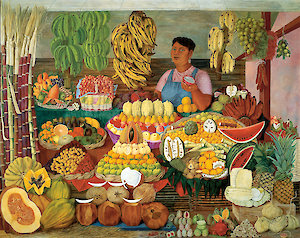

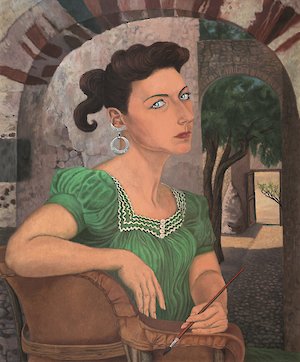
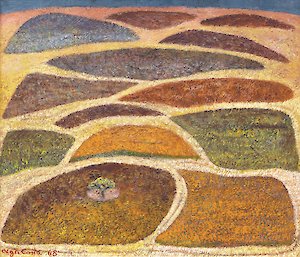
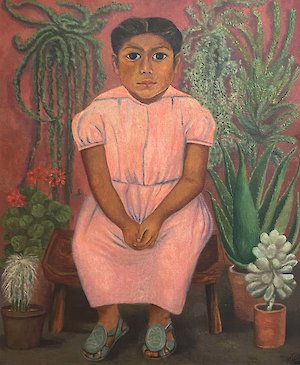
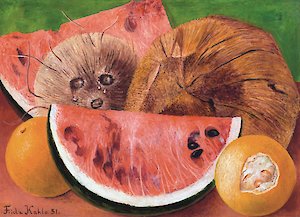
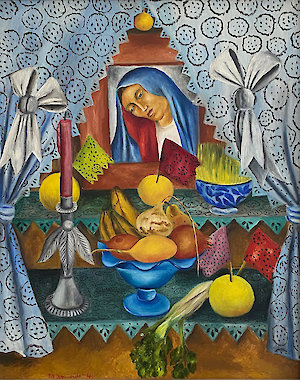
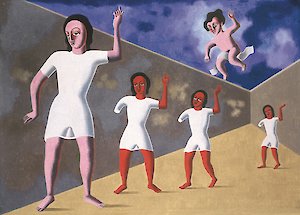
In her adopted country of Mexico, the Leipzig-born artist Olga Costa (1913–1993) has long been known as one of the most important and popular protagonists of Mexican modernism. The Museum der bildenden Künste Leipzig is now dedicating a major exhibition to her in her native city. It is also the first time that Costa’s work is being made accessible in a monographic exhibition in Europe. Her multifaceted oeuvre comprises mainly paintings, but also drawings and prints as well as tapestries and a wall design in the form of a mosaic. The exhibition offers an opportunity to become acquainted with Costa’s work in this range of media and in the context of other Mexican artists.
The exhibition at the MdbK traces Olga Costa’s work over a period of more than forty years and at the same time situates it in its contemporary Mexican context. As a prelude, we encounter the self-confident painter on the patio of her house in an early self-portrait. This is followed by a concise selection of Costa’s works from all creative phases. At the centre is the large-format commissioned work La vendedora de frutas (The Fruit Seller) from 1951, an icon of Mexican modernism. As a retrospective in a sense, the next section is devoted to the preconditions of Costa’s work and sketches the artistic situation upon her arrival in post-revolutionary Mexico. Frida Kahlo, Diego Rivera and Gerardo Murillo (also known as Dr. Atl) are represented here, as are Costa’s academic teacher Carlos Mérida and husband Chávez Morado. Further chapters revolve around questions of Mexican identity (Mexicanidad), gender-specific role models and body images, and networks of Mexican women artists. Costa’s engagement with fantastic painting, along with her conception of landscape and her poetic understanding of nature, are focal points of the exhibition. In her still lifes, Costa also occasionally stages objects of indigenous culture that she and her husband had compiled, which also suggests the artist’s role as a collector.
Time and again, Costa’s works enter into dialogue with works by her contemporaries, including Frida Kahlo, Diego Rivera, María Izquierdo, Rosa Rolanda, Lola Cueto, Alice Rahon, Juan Soriano and others. In addition to paintings, there are also photographs, textile works, hand drawings and prints on display. Taken together, this provides a panorama of Mexican art in the middle of the 20th century.
Covering almost the entire area of the MdbK’s basement, the exhibition brings together around 80 works on loan, from the Museo de Arte Moderno in Mexico City, the Museo de Arte Olga Costa – José Chavez Morado in Guanajuato, the National Museum of Mexican Art in Chicago and international private collections. In addition, there are 14 works from the MdbK’s own collection, including an important, hitherto little-noticed group of prints from the influential Taller de Gráfica Popular (People’s Graphic Workshop, TGP). This is an activist artists’ collective from Mexico City whose members drew attention to the social and political problems of their country through the more easily disseminated medium of printmaking. These prints also testify to the early and continuing interest in Mexican modernism in Leipzig.
The exhibition is a cooperation with the Instituto Estatal de la Cultura de Guanajuato and the Instituto Nacional de Bellas Artes y Literatura (INBAL) in Mexico and was conceived with the involvement of an academic advisory board that includes experts from Mexico.
The exhibition was made possible by the support of the Karin and Uwe Hollweg Foundation, the Peter and Irene Ludwig Foundation and the Förderer des Museums der bildenden Künste Leipzig e. V.. The exhibition opening is supported by the Embassy of the United Mexican States.
The exhibition catalogue in English and German is published by Hirmer Verlag. It is available in bookshops and at the MZIN.
Final days: On 25th und 26th March 2023 will be open until 8 pm.
Guided tour
with Aurelia Rager in the exhibition, due to great demand a second guided tour with Julian Galla is offered
Sun, 26.03.2023, 11 am
Workshop for school classes (from class 2)
OLGA IN MEXICO
Tuesday, Thursday & Friday, 10-12 h

